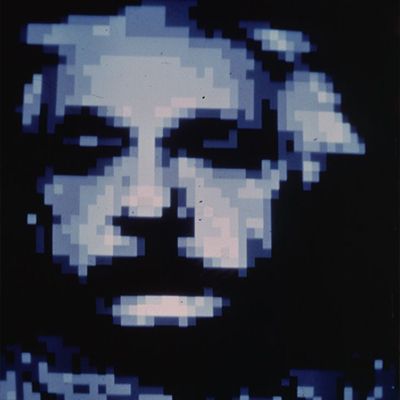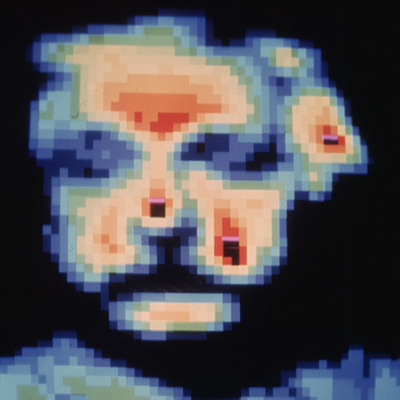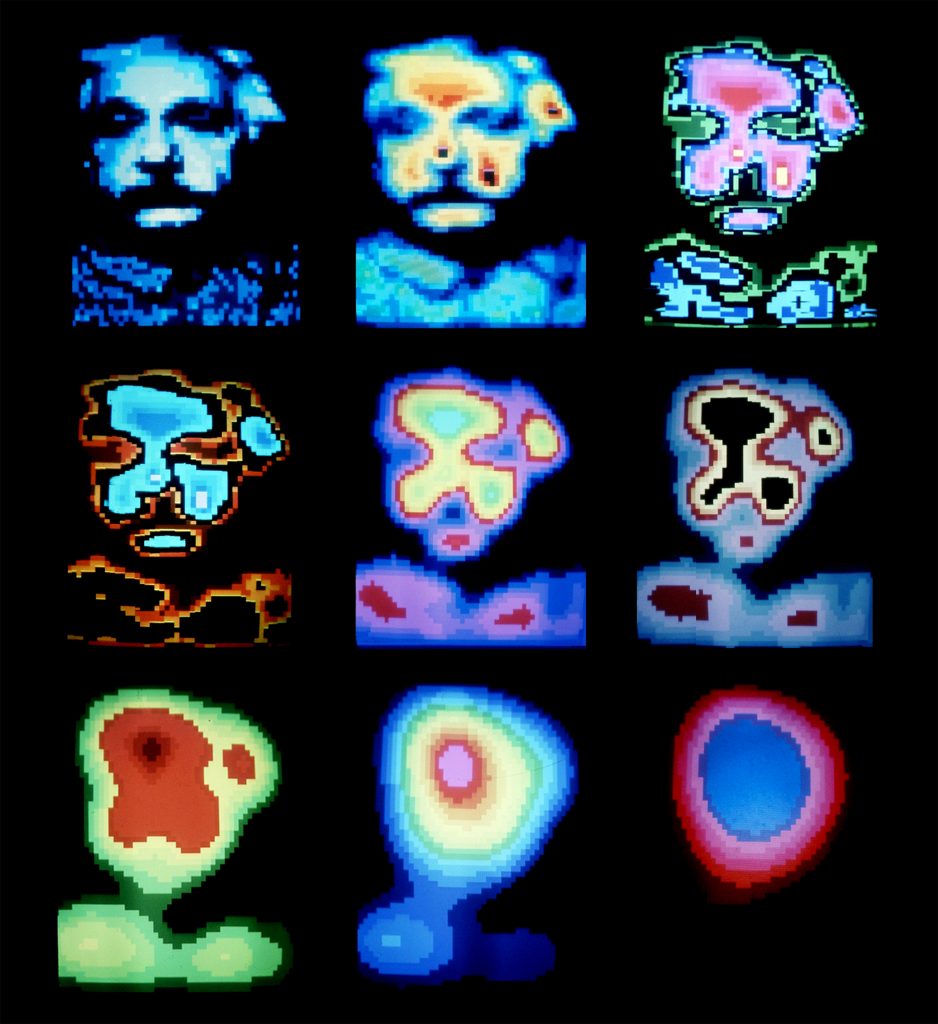















Einstein Digital Series (1974)
Einstein Digital is one of the earliest examples of processing art. First, a black-and-white photograph of Albert Einstein was scanned and the resulting digital code was stored using punched tape. The image data thus captured was then fed into a picture processing system, ‘Bildspeicher N’, – a medical diagnostic device then still under development. The system was intended to convert scintigrams, which were used to visualise the distribution of radioactive tracer substances in a patient’s body, into a format that could be readily interpreted in visual terms. The scintigram was replaced by the photograph of Einstein, which was displayed on the screen as a rough raster image and then subjected to a variety of iterative conversion processes under visual inspection. In this case, the transformations of form and colour were not intended to optimise the image, but rather to satisfy aesthetic criteria.


In this process, the content of the image becomes increasingly abstract and simplified to the point of complete dissolution. Thus, Herbert W. Franke gives expression to a consequence of Einstein’s theory of relativity, namely the dissolution of our seemingly concrete, visible world into an abstract space-time continuum. To create the images, Franke used a method he often employed, that is, the appropriation of the instruments of science, technology and medicine for the purposes of aesthetic design.
Photographs were taken directly from the screen and shown in exhibitions in the form of single enlargements. Other well-known works from the series include representations in which nine or twelve images were grouped together in a matrix arrangement and reproduced as offset prints. The digital Einstein is one of Franke’s most famous works, which was featured in many publications.
Additionally, several presentations of the work utilised cross-fading projection, for which Jörg Stelkens of Munich composed a musical sequence on the computer. The series Einstein Digital represents one of the earliest artistic applications of the picture processing method and the first to be animated for display.
The series was created using the Siemens computer’s ‘Bildspeicher N’, a digital picture processing system developed by Hans-Jürgen van Kranenbrock and Helmut Schenk for medical diagnostics at the Siemens-Reiniger-Werke für Medizintechnik in Erlangen.
Click here for the other series from Computer Systems:
